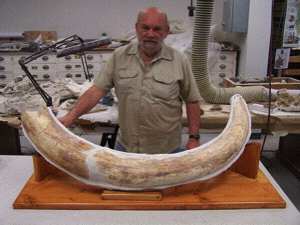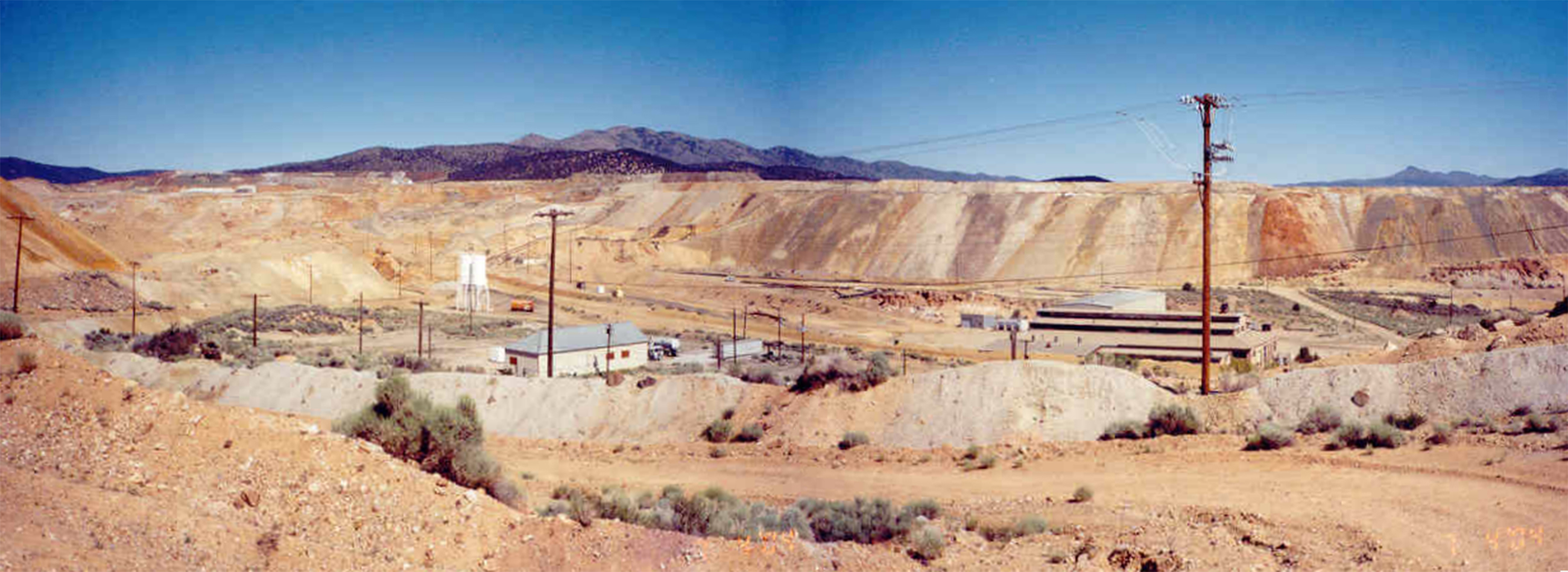After 20 years of traversing the world in the Navy, Earl Gowin has seen a little bit of everything.
But it took retirement - on a family ranch near Fillmore - for Gowin's grandest discovery.
In November 2004, a bulldozer operator hit something hard in Gowin's sand and gravel pit, which he had leased to a contractor.
"My first thought was, 'That looks like a mammoth tusk,' " Gowin recalled saying about the six-foot fossil. "I didn't know mammoths were in this part of the world, but evidently they were."
They were - and he was right.
Paleontologists say Columbian mammoths (Mammuthus columbi) along with mastodons stalked the shoreline of ancient Lake Bonneville more than 10,000 years ago. But the tusk unearthed in the erstwhile marshland of the Pahvant Valley - six miles northwest of Fillmore - marks the first found in that stretch of Utah.
"These things tend to be needle-in-the-haystack types of things. There really aren't that many of them out there," explained Don DeBlieux, a paleontologist with the Utah Geological Survey, who recovered the tusk. "It's kind of random that a gravel operation sees it before it gets chopped up."
To honor the novelty, the Utah Department of Natural Resources has elected to display the restored mammoth tusk at the Fillmore Library. The unveiling is scheduled for Wednesday.
Still, the road to restoration was both time-consuming and tricky. Gowin notes the bulldozer inadvertently cracked the tusk in half.
"To their credit, they stopped immediately," he said.
Gowin quickly sent a picture of his find to state paleontologists, who verified the authenticity of the tusk. Soon after, DeBlieux was dispatched to Fillmore to put a plaster jacket around the curved fossil. Then, in a Salt Lake City lab, volunteers spent 100 hours restoring the tusk.
Weighing nearly 10 tons and standing 14 feet at the shoulder, the Columbian mammoth was larger than the woolly mammoth and identified by its hairy coat and large, curved tusks.
Those tusks were used for fighting, foraging for vegetation and snow-plowing for food.
"We're very excited," said Tammy Kikuchi, spokeswoman for the Utah Department of Natural Resources, who noted museum curators agreed to send the tusk to the Fillmore Library. "It's really nice that the tusk is going to be in a location where it was found, and it will be available for the public to see."
That makes sense to Elaine and Earl Gowin, who moved to rural Utah from North Carolina five years ago.
"I'd rather have it here," he said, "and let the local kids and teachers benefit from it."
By Derek P. Jensen
The Salt Lake Tribune
Published: February 23, 2008





